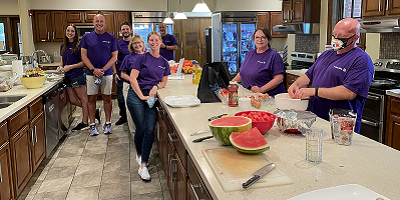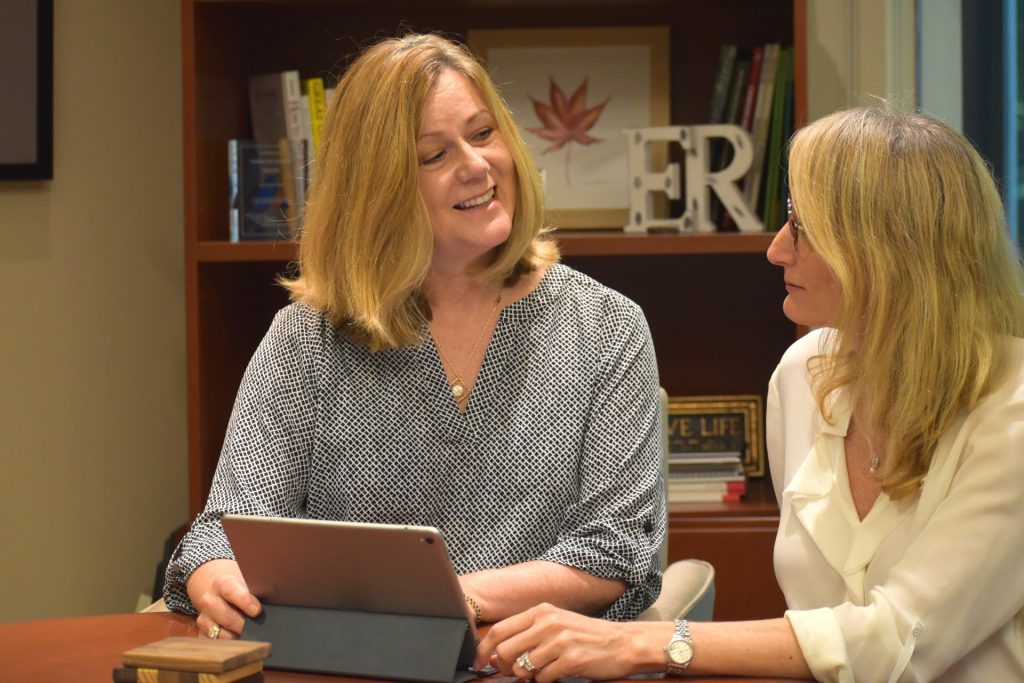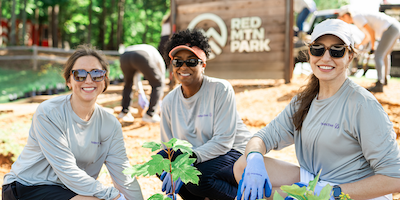How do we move forward from the COVID-19 pandemic, taking what we learned and using those lessons to become a better employer and protector of families? The circumstances that emerged from the COVID-19 pandemic are unlike anything we’ve ever seen before. We discovered a tremendous amount about our customers, our employees and the way we interact with and support one another.
In addition to my role as senior vice president and chief customer officer for Protective, I also serve as the chairman of our corporate emergency response team. A global pandemic is one of the potential scenarios we prepare for in our business continuity plans and tabletop exercises, and although no one could have seen this exact situation coming, we were as prepared as we could have been.
In March 2020, less than 20% of our employees were working remotely. Within a three week time period, our business, technology, facilities and human resources teams united to deploy 95% of the rest of our workforce to work from home with minimal disruptions. It was a hectic time — we needed to not only support employees during this uncertain time, but also our concerned customers who were calling in to ask if they were protected and if their policies were in good standing should the unthinkable happen.
COVID-19 is a novel virus — meaning that it was, and still is, extremely hard to see the path forward. We needed an objective, data-based framework to guide our actions, and we had to establish this very early on to ensure transparency and build trust. Our employees, customers and stakeholders wanted transparency — to know the process, the important dates and the criteria we used to make every decision.
Communicating what we knew so far, what we didn't know yet and how we'd manage the gaps in between was a key part of our success in managing our operations during the pandemic. So, too, has been embracing digital transformation; even before the pandemic, the pressure was on to provide customers an enhanced experience. While we invested a lot in our digital capabilities, COVID-19 accelerated adoption rates. This is a common side effect of the pandemic, according to an IBM report that found accelerated digital transformation at 59% of surveyed organizations.
Serving customers through COVID-19
Protective is a dynamic, values-driven company with over 3,500 employees and more than 11.7 million policies and contracts in force. Serving our customers and knowing the impact we can have on their lives is what gets me up in the morning.
I have the privilege to work with the employees who face our customers every day. My teams help our customers with their products, keep them up-to-date on their policies and are there for them at claim time when a loved one passes or financial health is impacted.
When we started seeing fatality rates rise due to COVID-19, we knew supporting customers and delivering on our promises would remain our top priority. We examined the data to determine expected increases in claim volume, then increased our staff levels to be able to appropriately respond. We ensured empathetic, qualified employees were available and conducted hiring and internal cross-training to maintain sufficient support for our customers. As volumes went down in other lines of business, we reallocated knowledgeable service-oriented employees to life claims. Thanks to these proactive measures, we were able to maintain the same timelines for payout of claims as before the pandemic.
Knowing many customers' abilities to make premium payments would be affected by the loss of income, we extended grace periods in all states. We also worked on a case-by-case basis with our investment partners and real estate tenants who were facing challenges.
Finally, we have continued to invest in the technology and self-service tools that customers need and expect right now. This includes e-signatures, online customer service, claim filing and payment and account management. We saw significant upticks in adoption for all those capabilities that we expect will be retained. We don't foresee people returning to non-digital modes, but offer choices as we believe it's important for our customers to be in control.
Supporting employees through COVID-19
Once we had the majority of our employees efficiently and safely working from home, we started to think about how to safely and efficiently return employees back to the office when appropriate. We expect to return those employees in phases, targeting this summer while continuing to monitor, learn and adjust along the way.
To guide our decisions, we monitored external health data such as the numbers of new cases, fatalities, hospitalizations and positivity rates across our geographies. We also relied on our HR partners to monitor internal health data.
Another important factor that guided our decisions was government and regulatory mandates, guidelines and restrictions in all the states and cities where our employees are based. Our government affairs team structured a way to monitor and interpret all of the guidelines to which we were subject, which helped determine other actions.
To further support our employees, we gathered data on their overall sentiment through surveys and pulse checks. This helped us determine employee concerns and understand how we can address them. Other ways in which we showed up for staff included:
- Continuing to invest in our employees and growing our employee base by over 600 in 2020
- Focusing on team and manager-to-employee engagement
- Promoting existing tools and resources for health and wellness, including our Employee Assistance Program, and hosting virtual fitness, nutrition and wellness sessions
- Enhancing communication with engagement tools, such as interactive monthly all-company town halls and weekly email communications from our president and CEO
Giving back to the community
Protective has always been a strong community partner, and our workforce is known for rising to the occasion to serve the communities where we live and work.
Last April, the Protective Life Foundation quickly responded by making a $1 million commitment to support immediate and longer-term COVID-19 relief efforts. We also made contributions to a range of non-profit organizations to meet critical needs, including food security, education, childcare for essential workers and economic recovery, including:
- Birmingham Strong Fund, an emergency loan fund for small businesses in Birmingham, our headquarter city, that is focused on stabilizing employment, stimulating economic vitality and offsetting losses related to COVID-19
- The University of Alabama at Birmingham (UAB) fund focused specifically on COVID-19 research and treatment development
- Organizations supporting childcare for essential frontline workers, including YMCA of Greater Birmingham and the Rapid Operating and Relief (ROAR) for Women Fund
- Food banks in Birmingham, Ala.; St. Louis; Cincinnati; Syracuse, N.Y.; Denver; Dover, N.H.; Chicago; and Brentwood, Tenn.
All of our community investments and corporate giving are data-driven — we look at criteria such as how many people it will impact and how much our investment will move the needle.
Despite the circumstances we faced in 2020, we accomplished so much and it is all thanks to our employees and their steadfast commitment to our customers, our communities and each other. The pandemic has been a tremendous learning experience. Many of the tools that only a handful of people used pre-pandemic have now formed the core of what we do every day, all day long.
We learned that we can work very effectively in a dispersed, remote environment. When envisioning the future, the word “hybrid" is used a lot. We now know that we certainly will not return to the pre-pandemic world, but neither will we be in a 2D environment all of the time. In the life insurance business, the sale was traditionally made across the kitchen table. While that has evolved, it still remains an emotional transaction — and the trust that is built through strong relationships remains a critical component.
Looking ahead, we are all thinking about getting the best of both worlds — complementing in-person communication with the efficiency and reach of virtual tools across sales, service and personal interactions.
The future might not look the same for us, but our commitments, focus and priorities remain steadfast.
Cissy Williams is Senior Vice President and Chief Customer Officer at Protective.
SM.2767317.06.21





 To exercise your privacy choices,
To exercise your privacy choices,